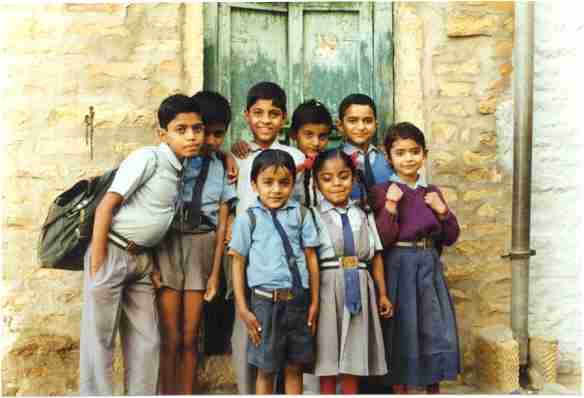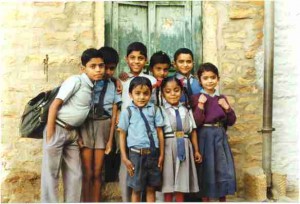Government Initiatives in Education
We have all marveled at the excellent quality of Kendriya Vidyalaya schools set up by the Government, and wondered why the other government schools do not follow such stringent norms.

We have all marveled at the excellent quality of Kendriya Vidyalaya schools set up by the Government, and wondered why the other government schools do not follow such stringent norms. Well, it seems like the Prime Minister has been wondering the same question. This is why he had proposed the setting up of 6,000 new model schools, following the standards set by the KVs in terms of infrastructure and facilities. These schools created at the block level will cost a total of Rs.9,321 crore during the 11th plan, 75% of which will be borne by the centre and the rest by the state governments. Reads the Press Trust of India report in Hindustan Times:
In the first phase, 2,500 schools would be set up through the state governments in educationally-backward blocks, Minister of State in PMO Prithviraj Chavan told reporters here. “The model schools will have infrastructure and facilities at least of the standards of the Kendriya Vidyalayas,” he said, adding that the pupil-teacher ratio and curriculum would also match the standards of the Central Schools.
As per the scheme prepared by the HRD Ministry, each block would have a model school which would look at comprehensive development of children. The schools would give equal importance to curriculur and extra-curricular activities including games, music, dance and arts.
In another news feature in Hindustan Times, we learn that Government schools in Delhi have been showing year on year improvement inspite of admitting more students each year.
With four of its schools finding a mention in the top 100-list and each student getting at least three distinctions on an average, the Rajkiya Pratibha Vikas Vidyalaya (RPVV), run by the Delhi government, once again proved that students of government schools can perform at par with public schools if given proper care.
About 8000 children study in these model schools. Delhi education minister, Arvinder Singh Lovely, said that proper screening of students who are admitted to these schools alongwith a proper screening of teachers who teach here is one of the main reasons behind the success of these model schools.
Further, it is reported that the Sarva Shiksha Abhiyaan program set up by the government to bring elementary education to millions of children has been successful to a large extent, and has thus created a need for strengthening secondary education infrastructure across the country. The HRD Ministry has taken note of this, and now plans to implement a secondary education scheme called Rashtriya Madhyamik Shiksha Abhiyaan (RMSA) during the 11th plan at a total cost of Rs.20,120 crore. Prasad Nichenametla reports in this article in Hindustan Times that a school will be set within 5km of every home:
Rashtriya Madhyamik Shiksha Abhiyan (RSMA), as it would be called, is aimed at expanding and improving the standards of secondary education — classes VIII to X. The RSMA would also take secondary education to every corner of the country by ensuring a secondary school (up to class X) within a radius of 5km for every neighbourhood.
“With the successful implementation of the Sarva Shiksha Abhiyan, a large number of students are passing out from upper primary classes creating a huge demand for secondary education,” the HRD Ministry said.
Wondering how they would go about it?
Targets under the programme include strengthening of 44,000 existing secondary schools, upgradation of 11,000 Upper Primary Schools to secondary level, 1.32 lakh classrooms would be constructed that would help in the expansion of the secondary schools. The programme would also concentrate on problem of teacher deficiency, as RSMA would recruit 2.5 lakh teachers in the plan period. Under RSMA, in-service training of five days would also be provided to teachers.
Allocation-wise also, the scheme, along with other initiatives in the secondary education segment — like girls hostels, model schools and new Kendriya and Navodaya Vidyalayas — would represent a quantum leap for the segment in 11th plan period. Allocation during 10th Plan was only Rs 4,325 crore.
It seems that the government has got it right this time. The intentions seem to exist, the plans have been formed, the budgets have been approved and the right nods have been given. Lets hope the implementation is taken through in the right manner, with proper monitoring and accountability. This will give a huge boost to the education system in India, and open doors to millions of children who can now afford to dream big.
Image Courtesy: Aar Kay
This story made me
-
97
-
121
-
89
-
167














